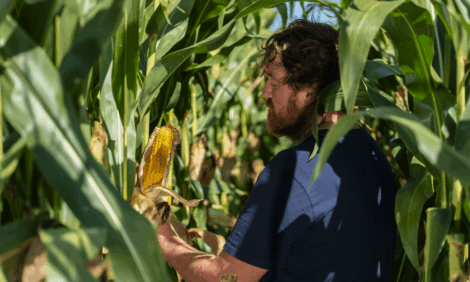



Interpreting the Cattle on Feed Report
By analysing cattle on feed reports by sex, weight and age, inferences can be made about the direction in which the feedlot sector is heading, according to Derrell Peel, Livestock Marketing Specialist, Oklahoma State University Extension.The stocks and flows of feedlot cattle that make up the cattle on feed report have a relatively straightforward interpretation when the underlying mix of cattle (sex, weight and age distribution) is relatively constant, at least on a seasonal basis.
For several months, changes in these animal demographics have made it much harder to interpret the cattle on feed report and anticipate the implications for future feedlot marketings and cattle slaughter.
The most recent USDA Cattle on Feed report indicated that the feedlot inventory was 10.37 million head, down 3.2 percent from one year ago. This makes eleven consecutive months of year over year decreases in feedlot inventory.

Subtle demographic changes can be observed from feelot reports indicating that the US cattle industry is becoming a yearling industry as high corn prices dominate, writes Mr Peel.
Feedlot inventories have been augmented by drought enhanced cattle movement since 2011 and the current inventory is the smallest for July since 2010. The current inventory is down less on a year over year basis than it was earlier (the March 1 inventory was down 7 percent year over year) because of relatively large placements in the spring. March and April placements were up compared to the prior year and May was down only slightly.
June placements were down 4.6 percent from one year ago. For the first six months of the year, net placements (placements less other disappearance) were up 64,000 head, 0.6 percent higher compared to 2012. A relatively large placement rate was sustained by a larger beginning feeder supply on January 1 and the likely diversion of some replacement heifers into feedlots.
*
"Heifer retention may pick up again this fall and further squeeze feeder supplies."
There are indications that something between 100 to 230 thousand head of replacement heifers may have entered the feedlots since January 1. The number of heifers on feed on July 1 was down from last year but not down nearly as much as on January 1. Not only will these replacement heifers not be available to place in the remainder of the year, heifer retention may pick up again this fall and further squeeze feeder supplies.
Moreover, some 400 thousand fewer head of Mexican cattle have been imported so far this year. By the end of the year, the reduction is likely to be 700 to 800 thousand head fewer Mexican imports. The impact of this on feeder supplies will be more apparent and more pronounced in the second half of the year.
More subtle but potentially more dramatic are the demographic changes (mostly weight distribution) of cattle entering feedlots. The most recent Cattle on Feed report showed that while overall placements were down, placements of heavyweight (>800 pounds) animals was up 27 percent. At the same placements of animal under 700 pounds was down 30 percent.
For the first six months of 2013 the total placements of cattle under 700 pounds in weight was down 493 thousand head, 10.8 percent lower compared to last year. For the same period, placements of cattle over 700 pounds in weight were up 517 thousand head or 8.5 percent.
The feedlot industry is clearly transitioning to a more yearling based industry. This is in response to the immediate incentives from record high corn this past year but also part of longer term adjustments to generally high priced corn compared to historical levels.
June feedlot marketings were the lowest in the data series for the month. However, the marketings number must be interpreted carefully in light of the level and weight distribution of placements in recent months. June marketings as a percent of cattle on feed was also low but one less day in the month moderates that somewhat.
Increased placements of heavy feeders implies less days on feed. Kansas feedlot data for April and May shows that steers were on feed an average of 9 days less this year compared to last year. Days on feed will decline more as marketings increasingly consist of higher percentages of heavy placements. In the June Cattle on Feed report, the number of cattle marketed as a percent of cattle on feed more than 90 days was nearly 3 percent higher than June 2012.
The combination of number and weight distribution of placements suggests that feedlot marketings will remain relatively strong from August into October but may drop sharply late in the year and into 2014.



